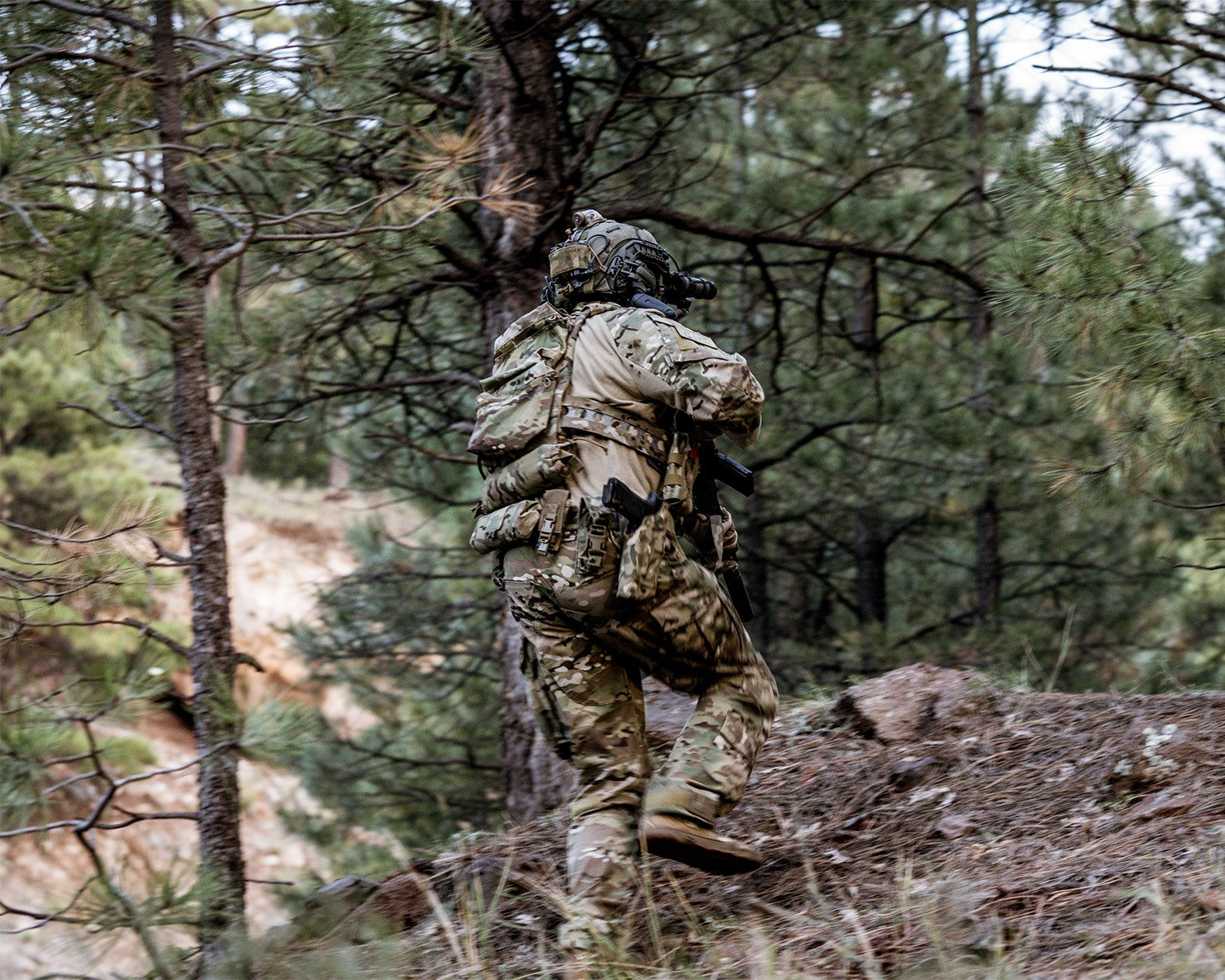Flame-Resistant Camouflage Clothing for Hazardous Environments
In hostile environments—where threats come from both fire and enemy—the uniform alone is no longer sufficient. Soldiers need gear that conceals, protects, and withstands. Flame-resistant camouflage clothing is not just a uniform: it’s an engineered structure that ensures thermal protection and tactical concealment.
This guide offers a technical and educational breakdown of these garments: their origin, composition, materials, certifications, and strategic value.
1. Origins of Camouflage and Fire Protection in Military Gear | Flame-Resistant Camouflage Clothing
1.1 From Visibility to Concealment and Survival
Military uniforms used to expose. Bright colors, rigid cuts, made soldiers visible. Modern warfare reversed that idea: stealth, survival, concealment.
In the 19th century, British troops switched to rifle green, Portuguese Caçadores wore brown jackets. Bright coats gave way to khaki, feldgrau. Long-range firearms demanded that soldiers disappear.
But fire remained overlooked. Until World War II. Bombings, vehicles, fuel tanks—fire became a real threat. Military aviation introduced thick wool or dense cotton suits, sometimes asbestos-lined. The first flame-resistant suits were issued.
1.2 Turning Uniforms into Thermal Barriers
By the 1960s and 70s—Vietnam, Middle East—the threat shifted to the ground. Foot soldiers needed protection too.
DuPont introduced Nomex®: an aramid fiber that doesn’t melt, drip, or burn. Its resistance is inherent, unaffected by washing. Kevlar® reinforced it: combining thermal protection with strength. Lenzing™ FR, a modified cellulosic fiber, added comfort and moisture management.
Modern uniforms blend these fibers: creating multi-material fabrics that are lightweight, breathable, and heat-resistant.
2. Technical Characteristics of Flame-Resistant Combat Uniforms | Flame-Resistant Camouflage Clothing
2.1 Certified Fire Protection
Military-grade FR uniforms meet strict standards:
-
NFPA 2112 (US): guards against flash fires. Acceptable result: <50% predicted body burn after 3 seconds of exposure.
-
ISO 11612 (global): rates performance against contact, radiant, and convective heat.
-
MIL-SPEC (US/NATO military standards): includes ASTM D6413 (vertical flame test), ASTM F1930 (Thermo-Man® full garment test).
These standards demand no melting, no dripping, no flame propagation. During an IED blast, vehicle fire, or sudden flame exposure, certified uniforms offer immediate protection.
2.2 Engineered Fibers and Smart Treatments
Modern FR fabrics fall into three categories:
-
Inherently flame-resistant aramids:
-
Nomex®: withstands temps up to 370°C, chars instead of burning.
-
Kevlar®: adds strength, slash resistance, and thermal durability.
-
-
Modified cellulosic fibers:
-
Lenzing™ FR, Kermel®: breathable, soft, and flame-resistant. They wick moisture and avoid heat buildup.
-
-
FR-treated fabrics (e.g., Pyroshell™):
-
Treats cotton or poly blends with flame-inhibiting coatings (phosphorus or silicate-based).
-
Makes basic textiles self-extinguishing without compromising flexibility.
-
Many include antistatic threads (carbon, stainless steel) to prevent spark ignition in volatile zones. The result is a thermal barrier that maintains mobility and durability.
2.3 Effective and Fire-Resistant Camouflage
Modern patterns must be both effective and flame-proof. Specialized inks bond to FR textiles without reducing performance:
-
MultiCam®: versatile across multiple terrains.
-
MARPAT: digitized pattern, used by USMC.
-
A-TACS AU-X: blurred organic design for arid landscapes.
These patterns are fully compatible with FR applications, and some are multispectral, reducing infrared and thermal signatures for stealth against modern surveillance.
3. Strategic Advantages in the Field | Flame-Resistant Camouflage Clothing
3.1 Tactical Suit, Critical Protection
Special forces, bomb squads, tactical units—operate in fire-prone environments. Here, protective clothing saves lives.
Example: FROG program (Flame Resistant Organizational Gear), launched by the USMC in 2007. Designed to reduce burn injuries from IEDs. Results: fewer casualties, better mission success.
The French Army equips Leclerc tank crews and EOD units with FR gear. Fire, as a threat, is no longer a side issue.
3.2 Less Injury, Less Heat Fatigue
Flame-resistant uniforms:
-
Don’t melt → no molten plastic on skin
-
Don’t adhere → fewer serious burns
-
Disperse heat → prevent overheating
Defender® M, a blend of Nomex, Lenzing FR, and nylon, offers:
-
Breathability
-
Rapid drying
-
Thermal regulation
Mesh inserts, stretch zones, ergonomic seams further reduce heat fatigue, enabling longer, more effective missions.
3.3 Standard in Modern Warfare
By 2008, every US soldier in Iraq/Afghanistan received an FR uniform as standard issue. NATO allies followed suit.
IEDs, molotovs, fuel fires—these realities made flame resistance essential. An FR uniform now ranks alongside a helmet or plate carrier in critical gear.
The result: a soldier who is:
-
More alert
-
Less stressed
-
More effective
-
Longer-lasting on mission
And still fully camouflaged. No need to choose between stealth and safety.
4. Choosing the Right Flame-Resistant Camouflage Gear
Mission type?
-
Desert → A-TACS AU-X
-
Multi-terrain → MultiCam®
-
Urban → MARPAT or gray schemes
Required certification?
-
NFPA 2112
-
ISO 11612
-
MIL-SPEC or NATO STANAG
Materials?
-
Nomex®, Kevlar®, Lenzing™ FR
-
Avoid low-cost FR-treated cotton without longevity proof
Ergonomics?
-
Stretch zones
-
Articulated joints
-
Flat seams
-
Compatible with tactical gear and armor
Maintenance?
-
No bleach
-
No fabric softener
-
Machine wash at ≤60°C
-
Low heat tumble dry
Lifespan?
-
Up to 100 wash cycles
-
Many models last 3–5 years under active duty
FAQ – Frequently Asked Questions
Can I machine wash flame-resistant uniforms?
Yes. Avoid bleach and softeners. Wash at 40–60°C. Low-temp drying is recommended.
How long do these garments last?
Top-tier models (Nomex, Defender M) survive 100+ wash cycles. Always check for wear and test periodically.
Do they protect from cold or extreme heat?
No. They block flame and flash heat, not cold or long-term thermal exposure. Pair with insulating layers in arctic environments.
Where can I buy quality FR camouflage uniforms?
Use a reputable tactical supplier. Nutsof offers certified, field-tested flame-resistant camouflage apparel and accessories: Visit Nutsof
Conclusion
Flame-resistant camouflage uniforms are no longer optional—they are operational necessities. They protect from burns, maintain stealth, and ensure mission continuity.
Thanks to advanced materials like Nomex®, Kevlar®, Lenzing™ FR, combined with tactical camouflage patterns, today’s uniforms offer complete performance.
Best regards,
The Nutsof Team
Advanced Camouflage & Defense Solutions
🌐 www.nutsof.com
Follow us on Facebook and Instagram for the latest in advanced military camouflage technologies.


